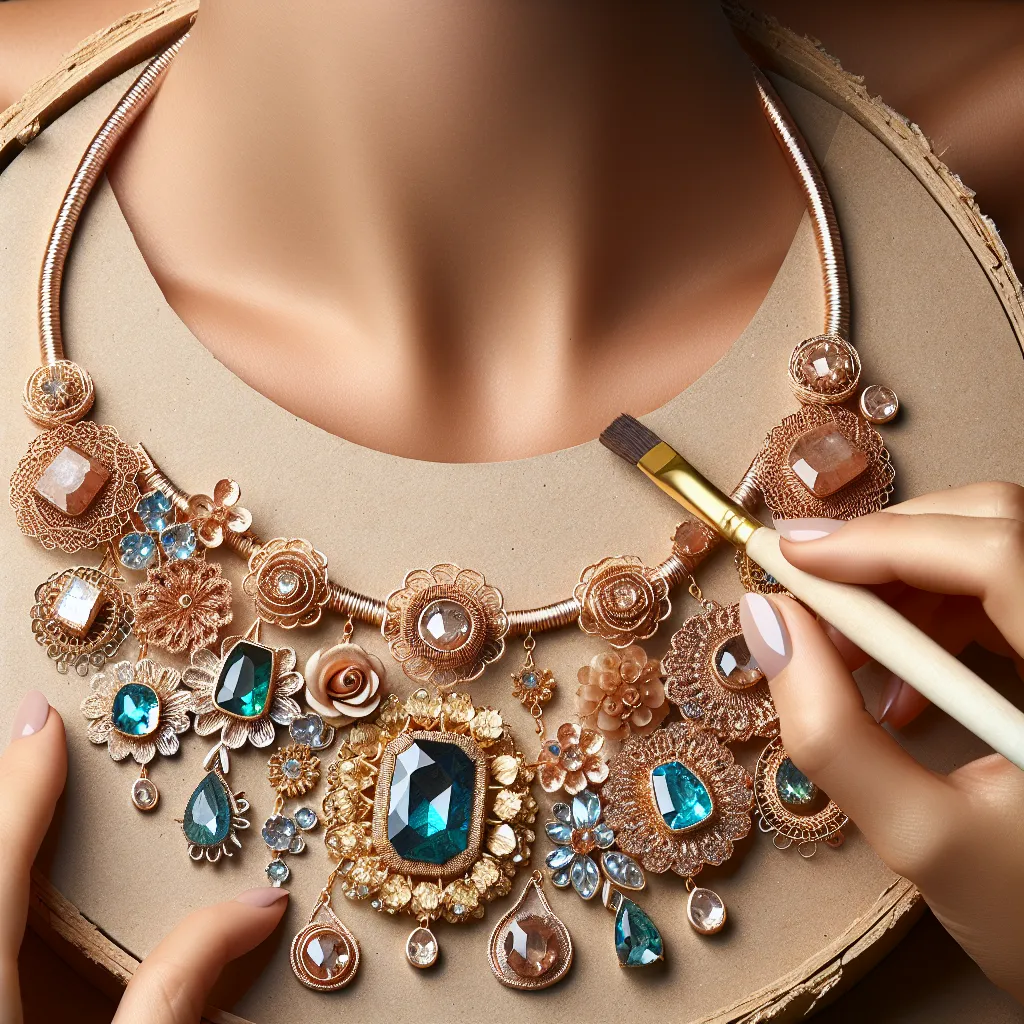The Shift Towards Ethical Sourcing in Jewelry
As the awareness of environmental and ethical issues continues to grow, the jewelry industry is experiencing a shift towards more sustainable and ethically sourced materials. This trend is especially evident in the rising popularity of sustainable jewelry, as consumers become more conscious of the impact of their purchasing decisions.
Ethical sourcing in jewelry refers to the responsible mining and sourcing of materials such as gold, diamonds, and gemstones. In the past, the jewelry industry has faced criticism for its association with unethical practices, including labor exploitation and environmental degradation. However, many jewelry designers and manufacturers are now embracing ethical sourcing practices to address these concerns.
By prioritizing ethical sourcing, jewelry companies are demonstrating their commitment to social and environmental responsibility. This involves ensuring fair wages and safe working conditions for miners, as well as minimizing the environmental impact of mining activities. Additionally, ethical sourcing promotes transparency throughout the supply chain, allowing consumers to trace the origins of the materials used in their jewelry.
Furthermore, the shift towards ethical sourcing in jewelry is not only driven by consumer demand but also by industry regulations and certifications. Organizations such as the Responsible Jewellery Council (RJC) provide certification for ethical practices, helping consumers identify jewelry that meets strict ethical standards.
Overall, the increasing focus on ethical sourcing in jewelry reflects a broader movement towards sustainability and ethical consumption. As consumers seek out jewelry that aligns with their values, the demand for ethically sourced and sustainable pieces continues to rise, driving positive change within the industry.
Eco-Friendly Materials Transforming the Industry
In recent years, there has been a notable shift in the jewelry industry towards sustainability and eco-friendly materials, transforming the way jewelry is produced and perceived. This shift is driven by a growing consumer awareness of the environmental and ethical impact of the jewelry they purchase. As a result, sustainable jewelry made from eco-friendly materials has been gaining popularity in the market, catering to the increasing demand for ethical and environmentally conscious products.
One of the key factors contributing to the rising popularity of sustainable jewelry is the use of eco-friendly materials in the production process. Traditionally, the jewelry industry has been associated with practices that have negative environmental implications, such as mining for precious metals and gemstones. However, sustainable jewelry brands are revolutionizing the industry by utilizing recycled metals, ethically sourced gemstones, and innovative materials like lab-grown diamonds and sustainable wood.
Recycled metals, including reclaimed gold and silver, are being extensively used in sustainable jewelry production, reducing the need for environmentally destructive mining practices. Ethically sourced gemstones, such as diamonds, sapphires, and emeralds, are becoming increasingly sought after, as consumers prioritize ethical mining practices and traceable supply chains. Additionally, lab-grown diamonds are gaining traction as a sustainable alternative to mined diamonds, offering the same quality and brilliance while minimizing the environmental impact.
Furthermore, sustainable jewelry designers are exploring unconventional materials like sustainable wood, bamboo, and even repurposed ocean plastics to create unique and environmentally friendly pieces. By integrating these eco-friendly materials into their designs, jewelry brands are not only reducing their carbon footprint but also contributing to the promotion of circular economy principles within the industry.
As consumer consciousness continues to drive the demand for sustainable and eco-friendly products, the use of these materials is fundamentally transforming the jewelry industry. The shift towards sustainable materials is not only reshaping the manufacturing process but also reshaping consumer perceptions, paving the way for a more environmentally conscious and ethical approach to jewelry consumption.
The Impact of Sustainable Practices on Jewelry Design
As the awareness of environmental issues continues to grow, there has been a significant shift towards sustainable practices in various industries, including jewelry design. The impact of sustainable practices on jewelry design has been substantial, leading to the rising popularity of sustainable jewelry.
Sustainable jewelry design takes into consideration the environmental and social implications of the entire jewelry-making process. This includes responsibly sourcing materials, reducing waste, and ensuring ethical labor practices. With an increasing number of consumers prioritizing ethical and eco-friendly products, jewelry designers are incorporating sustainable practices into their creations.
One of the key aspects of sustainable jewelry design is the use of recycled and ethically sourced materials. Designers are utilizing recycled precious metals and gemstones, as well as integrating materials from sustainable sources such as ethically mined diamonds and fair-trade gemstones. This not only minimizes the environmental impact of mining but also promotes the ethical treatment of workers in the supply chain.
Additionally, sustainable jewelry design encourages innovative manufacturing processes that minimize waste and energy consumption. Designers are exploring techniques such as 3D printing and using environmentally friendly alternatives to traditional jewelry-making chemicals. This focus on sustainable production methods contributes to a reduced carbon footprint and sets a new standard for eco-conscious jewelry creation.
Furthermore, the emphasis on sustainability has influenced the aesthetic of jewelry design. Sustainable jewelry pieces often feature minimalist and timeless designs, reflecting the enduring nature of ethical and responsibly made jewelry. Consumers are drawn to the unique stories behind sustainable jewelry, appreciating the craftsmanship and the positive impact of their purchase.
In conclusion, the impact of sustainable practices on jewelry design has revolutionized the industry, paving the way for the increasing popularity of sustainable jewelry. By prioritizing ethical sourcing, environmentally friendly production, and conscious design, jewelry creators are meeting the demand for sustainable and stylish adornments.
Embracing Responsible Consumption in the Jewelry Market
In recent years, there has been a significant shift in consumer behavior towards embracing responsible consumption, especially in the jewelry market. This shift is evident in the rising popularity of sustainable jewelry, as more people are becoming aware of the environmental and ethical issues associated with traditional jewelry production.
Sustainable jewelry, also known as eco-friendly or ethical jewelry, is crafted using environmentally friendly practices and ethically sourced materials. This includes using recycled metals, traceable gemstones, and adopting fair trade principles in the production process. Consumers are increasingly seeking out these sustainable options as they align with their values of environmental conservation and ethical sourcing.
Furthermore, jewelry designers and brands are recognizing the demand for sustainable options and are integrating eco-friendly practices into their businesses. From small-scale artisans to established jewelry houses, many are making concerted efforts to offer collections that embrace responsible consumption. This shift not only benefits the environment and mining communities but also resonates with conscientious consumers who want to make socially responsible purchasing decisions.
The embrace of sustainable jewelry signifies a broader movement towards conscious consumerism in the jewelry market. It reflects a growing awareness of the impact of consumer choices and a desire to minimize the negative effects of traditional jewelry production. As the demand for sustainable jewelry continues to rise, it is indicative of a positive change towards a more environmentally and socially conscious jewelry industry.




